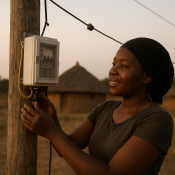
How BIM (Building Information Modeling) is Changing Construction Planning
Building Information Modeling (BIM) is revolutionizing the construction industry by providing a collaborative platform for planning, designing, and managing building projects.
What is BIM?
BIM is a digital representation of a building's physical and functional characteristics. It serves as a shared knowledge resource, enabling seamless collaboration among stakeholders.

Advantages of BIM in Construction:
- Enhanced Collaboration: All parties—from architects to engineers—work on a unified model, reducing misunderstandings.
- Accurate Cost Estimation: BIM software integrates real-time data, providing precise cost breakdowns and reducing budget overruns.
- Risk Reduction: Virtual simulations identify potential issues before construction begins, saving time and resources.
- Sustainability: BIM tools optimize designs for energy efficiency and eco-friendliness.
- Lifecycle Management: BIM extends beyond construction, aiding in the maintenance and renovation of buildings.
By adopting BIM, the construction industry is moving toward more efficient, cost-effective, and sustainable practices.




